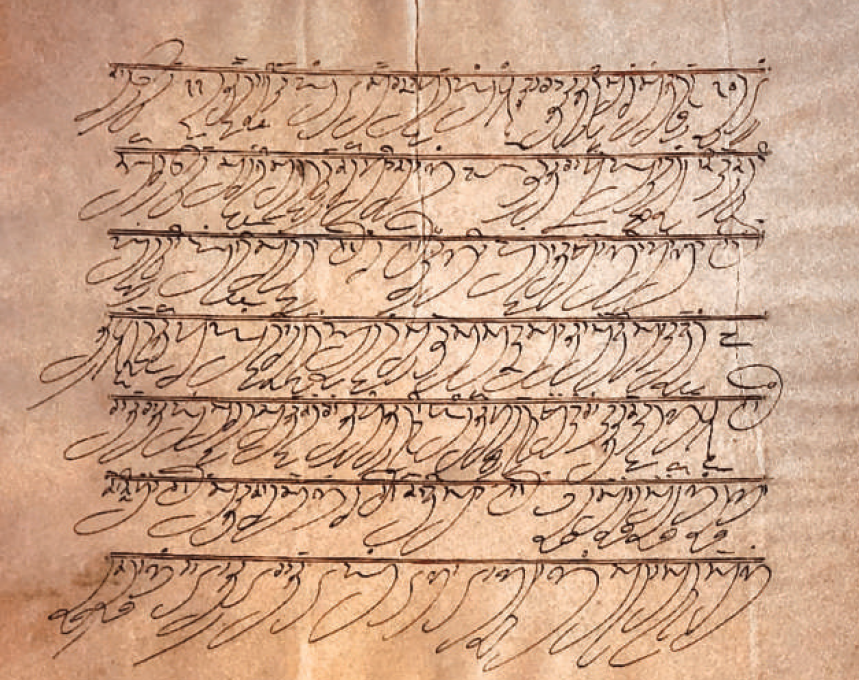Chandi Charitar 2 on:
[Wikipedia]
[Google]
[Amazon]
''Chandi Charitar II'' or ''Chandi Charitar Duja or Ath Chandi Charitar Likhyate'' ( pa, ਚੰਡੀ ਚਰਿਤ੍ਰ ਦੂਜਾ, lit=The Story of Chandi (2)), is the 5th chapter of the Dasam Granth, whose authorship is generally attributed to
/ref> The plot of the text is based on the Markandeya Purana,Macauliffe, Max Arthur (28 March 2013). ''The Sikh Religion: Its Gurus, Sacred Writings and Authors, Volume 5''. Cambridge University Press. pp. 80, 81. much like the previous Chandi Charitar I.Chandi Di Vaar : Jeet Singh Sital A retelling of the story of the Hindu goddess, Durga again in the form of Chandi; it again glorifies the feminine with her fighting the war between good and evil, and in this section she slays the buffalo-demon

Guru Gobind Singh
Guru Gobind Singh (; 22 December 1666 – 7 October 1708), born Gobind Das or Gobind Rai the tenth Sikh Guru, a spiritual master, warrior, poet and philosopher. When his father, Guru Tegh Bahadur, was executed by Aurangzeb, Guru Gobind Sing ...
.Dasam Granth - An Introductory Study/ref> The plot of the text is based on the Markandeya Purana,Macauliffe, Max Arthur (28 March 2013). ''The Sikh Religion: Its Gurus, Sacred Writings and Authors, Volume 5''. Cambridge University Press. pp. 80, 81. much like the previous Chandi Charitar I.Chandi Di Vaar : Jeet Singh Sital A retelling of the story of the Hindu goddess, Durga again in the form of Chandi; it again glorifies the feminine with her fighting the war between good and evil, and in this section she slays the buffalo-demon
Mahisha
Mahisha or Mahishaka was a kingdom in ancient India. The capital, Mahishuru, is currently known as Mysore, a city in Karnataka. This kingdom is mentioned in Mahabharata, though Puranas (especially Markandeya Purana) gives more information. The ...
, all his associates and supporters thus bringing an end to the demonic violence and war.
Overview
This composition deals with themes of battle and war. It's authorship is generally and traditionally attributed toGuru Gobind Singh
Guru Gobind Singh (; 22 December 1666 – 7 October 1708), born Gobind Das or Gobind Rai the tenth Sikh Guru, a spiritual master, warrior, poet and philosopher. When his father, Guru Tegh Bahadur, was executed by Aurangzeb, Guru Gobind Sing ...
. This composition was written in Braj at Anandpur Sahib, Punjab.
It has eight cantos, contains 262 couplets and quatrains,Singha, H.S. (2000). ''The Encyclopedia of Sikhism (Over 1000 Entries)''. Hemkunt Press. p. 54. ISBN 9788170103011.Makin, Gursharan Singh. ''Zafarnama: The Epistle of Victory'' (1st ed.). Lahore Book Shop. p. 13. mostly employing Bhujang Prayat and Rasaval measures (chhands), divided into 8 chapters.
Authenticity
This work was composed at Anandpur Sahib, sometime before 1698 CE, the year when the Bachitar Natak was completed. According to Max Arthur Macauliffe, the composition was written by bards in who were employed byGuru Gobind Singh
Guru Gobind Singh (; 22 December 1666 – 7 October 1708), born Gobind Das or Gobind Rai the tenth Sikh Guru, a spiritual master, warrior, poet and philosopher. When his father, Guru Tegh Bahadur, was executed by Aurangzeb, Guru Gobind Sing ...
and translated the Durga Saptashati. He could not ascertain whether principles of Sikhism were actually imbibed in Chandi Charitras or if they had a flavor of Hinduism is still in it.
It differs from Chandi Charitar Ukti Bilas
''Chandi Charitar Ukti Bilas'' or ''Chandi Charitar Ukat(i) Bilas'' ( pa, ਚੰਡੀ ਚਰਿਤ੍ਰ (ੳਕਤਿ ਬਿਲਾਸ), also called Chandi Charitar 1 (ਚੰਡੀ ਚਰਿਤ੍ਰ (ਭਾਗ ੧)) or Chandi Charitar Part One ...
in that it does not reference the chapters within the Markandeya Purana, but still tells the same story. The work contains 262 verses in total. The 8th and last chapter of the Chandi Charitar II is known as ''Chandi Charitar Ustat'' (ਅਥ ਚੰਡੀ ਚਰਿਤ੍ਰ ਉਸਤਤ) where it praises the goddess.
Other related compositions include Chandi Charitar Ukti Bilas, Chandi Di Vaar, and Uggardanti.

References